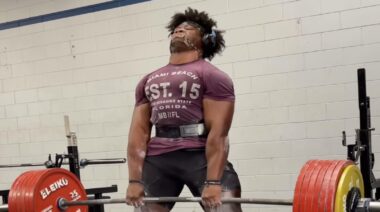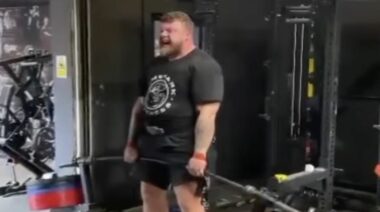Throughout my time in the strength industry, I’ve found that the deadlift is often misunderstood. I love the deadlift as a test of strength. No racks, no fancy stuff, just you versus the barbell. But it seems many people end up playing not much more than a guessing game when it comes to increasing the deadlift.
Powerlifters and strongmen aside, I tend to see the deadlift trained with a token effort every so often, in the hope that this plus all the other training you do will increase or at least maintain your max numbers. And there are numerous questions to be decided upon – belt or no belt? Straps or no straps? And plenty more.
But it’s time to stop reading and start doing. You need to test out deadlift strategies and see how they work for you. This article provides you with fifteen practical strategies you can use start using right now if you’re serious about increasing your deadlift.
Read through all of them and see which may help you. Let me know in the comments if you have any questions about how to apply them.
1. Deadlift More
If you’re reading this article, you want to improve your max deadlift. But if you’re only deadlifting (or performing a deadlift variation) every few weeks or even months, you are not giving your deadlift enough love to justify an improvement. Sure, you can improve your deadlift through training other lifts, but if you genuinely want to start pulling more off the floor, start training the deadlift more frequently.
2. Deadlift Less
If you’re performing the classic deadlift a few times a week in a desperate attempt to up your maxes, you’re going to struggle to recover from these sessions, to the point where you’ll come into your next session under recovered and at risk of injury. Clearly this is not a sustainable path. I’ve learned over the years that slow gains are sustainable gains. Realize that building the deadlift takes time, but is both possible and worth it.
3. If You Lift Conventional, Go Sumo
I know for a fact that the majority of conventional deadlifters have never tried sumo before. Picking a bar up in a half-assed sumo style a few times before saying it’s not for you and therefore rejecting it doesn’t count. That’s the equivalent of my son licking a new food I ask him to try before telling me he doesn’t like it and he’s not having any. Use sumo as your deadlift variation for at for at least a full cycle. Sumo deadlifts will help you to build great hip and quad strength.
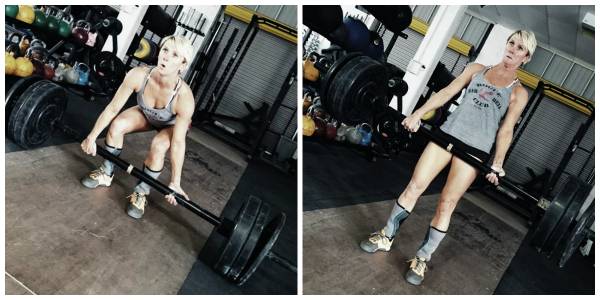
4. If You Lift Sumo, Go Conventional
If you lift sumo, you probably do it because you have worked out that sumo is best for you and your body proportions. And I’m not about to take that away from you. But consider working with conventional deadlifts for a cycle. This will target the hamstrings and the back more effectively. Using a deadlift variation that works these areas hard will more than likely pay dividends when worked for a respectful period of time before being plugged back into your sumo.
5. The Deadlift Starts From Standing
Realize the start of the deadlift is not when you start to pull the bar. It’s not even when you’re set in the bottom position ready to lift. It starts from when you are standing up in front of the bar. This is when you must set your footwork, set your posture, and create tension through the body before reaching for the bar.
6. Squeeze the Glutes
Sure, this may be a given for many – in theory. But are you actually squeezing the glutes as hard as you possibly can before you lift? You need to do this before you lift and maintain this tension. Attempting to create this tension during the lift is too late.
7. Get Tight
“Grip it and rip it” may look good on a t-shirt, but rarely does it look good on a lift. Take your time in the set up to make sure you set yourself with good position and tension.
8. Do Grip Work
It doesn’t matter if we’re talking about a heavy single or a rep max, a super solid grip is going to help you. Consider doing farmer’s walks, fat bar deadlifts, static holds, higher rep sets, or a combination of the above.
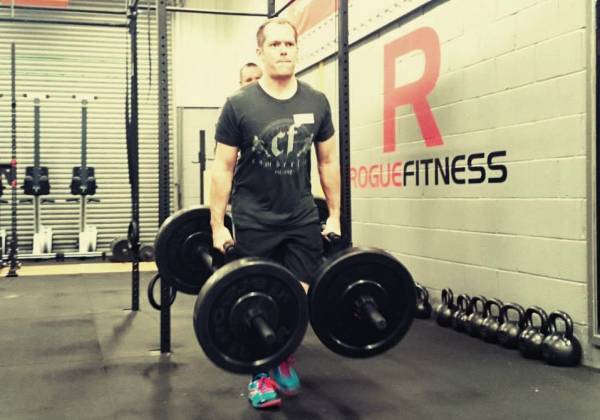
9. Grip the Hell Out of It
When your brain thinks you can’t grip something, it will send a signal to your body that what you are doing is too dangerous. As a consequence, your brain will shut the body down and you can’t lift the thing. Gripping the bar hard not only means there is less chance of physically losing it out of your grip, but also that there is more chance your body thinks it can perform the lift.
10. Break the Bar
While you’re at it, snap that bar in half. Or at least try to. This action will help you to tighten up the lats, which in turn will help you keep the bar close to your body on the way up. And keeping the bar close to you will help you to make the lift. So break the damn bar!
11. Pull the Bar Into You
So you’re working on breaking the bar. This is good. Now remember what this cue is trying to achieve in terms of movement. The cue by itself will help you to keep the bar closer, but you also need to focus on pulling the bar into and up your body to make this happen.
12. Hips In
When you get the bar past your knees, stop thinking about standing up with the bar, and start thinking about squeezing the glutes as hard as you can and driving the hips forward to meet the bar. What, drive forward instead of up? Yes. Try it.
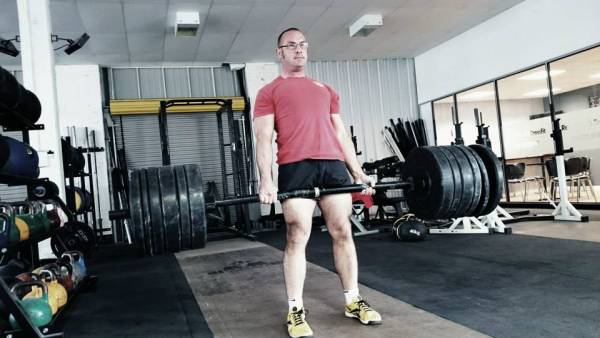
13. Do Deficit Deadlifts
Stand on a plate and set yourself super-tight at the bottom. Imagine drilling your feet through the plate as you pull the bar off the floor. This will help to teach a strong and long leg drive as well as position and tension off the floor.
14. Do Rack Pulls
Rack pulls are a fantastic way to get some heavy weight in your hands without creating too much of a recovery demand. They are also great for teaching an aggressive lockout. You can do rack pulls from any height, but if I had to pick one variation, it would be just below the knees. This is low enough to keep it away from being purely an ego lift, while making it simple to set up on the bar in the same position as you would be at that point in the deadlift. This is important for the transfer into the full lift.
15. Deadlift for Reps
If you’ve never tried performing a set of eight to twelve deadlifts at the end of a tough deadlift session, I suggest you give it a go. They don’t need to be and shouldn’t be heavy – use the same weight as you would use a four or five rep max. To create the necessary effect, it is critical you either drop the bar at the top or lower it, release and stand up, and reset each time. Performing deadlifts in this way, when the deadlift muscles are a little fatigued, will teach your body to find the optimum set up along with the most efficient technique for lifting the bar – because it needs to.
Photos courtesy of Strength Education.


